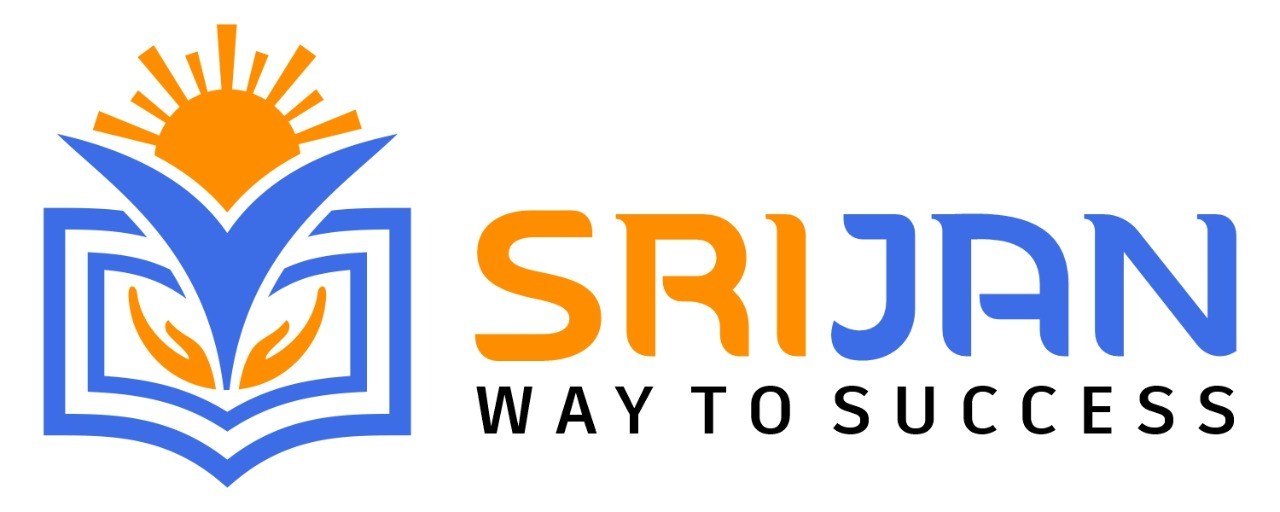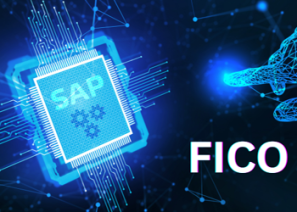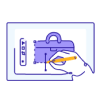SAP ABAP Course Online: Learn Advanced Business Application Programming
Is this your chance to advance your SAP development career? The SAP ABAP course online is a training class in ABAP, a high-level programming language developed by SAP for the development of its SAP solutions. Whether you are just starting or have significant experience, this course equips you with the tools needed for customizing, integrating, and extending SAP applications. Using experienced guidance, hands-on activities, and real-world examples, the course trains you to become an excellent SAP ABAP consultant
Whether you want to find SAP ABAP online training courses or instructor-led classes, this course ensures that you gain the knowledge and confidence you need to succeed
Why Choose the SAP ABAP Course Online?
Choosing the SAP ABAP course online is a flexible and comprehensive way of learning SAP's core programming language. The course encompasses all aspects of ABAP, its applications, and how it drives SAP systems. You can learn at your own pace, making it ideal for beginners and professionals
Learn at Your Own Pace
With SAP ABAP training online, you can opt for the learning style that suits you the best. From live classes to self-paced learning, you get the opportunity to learn as per your suitability or time around the clock. This is perfect for students as well as professionals already working.- Expert Instructors : The SAP ABAP course online is taught by industry professionals who are experienced instructors. These experts will guide you through every aspect of ABAP programming, helping you create a solid foundation. Their knowledge helps you understand complex concepts easily and apply them to real-world scenarios.
- Hands-on Projects:Our SAP ABAP online training is project oriented. This means that you will learn how to develop, customize, and optimize SAP applications through real-life applications and projects. This will equip you with practical problem-solving skills and make your job ready
- Lifetime Support: After completing the SAP ABAP training online, you still have access to resources and support. You can go back to reviewing course materials, get answers to your questions, and hone your skills at any time that you need. This ensures that even after you have completed your learning, you are updated with the latest.
What is SAP ABAP?
SAP ABAP is the programming language primarily used for developing and customizing SAP ERP applications. It is used to build new applications, modify existing ones, and create solutions specific to business needs
Why is SAP ABAP Important?
ABAP is a skill highly demanded by businesses for tailoring SAP software to unique requirements. So, the more you know ABAP, the more varied the industries you will work in, including finance, health care, manufacturing, and many other
- Customization: ABAP enables the modification of existing SAP applications or entirely new SAP applications based on business requirements
- Data Handling: ABAP helps developers efficiently manage and process data, which is crucial for data-driven decision-making.
- Integration: This ensures integration between SAP and other enterprise systems with smooth flow of data across platforms.
- Reporting: ABAP uses the reporting tool to help create custom reports that can provide valuable insights into the business
- Flexibility The language is adaptable because you can develop both custom and standard applications for diverse business requirements.
The SAP ABAP online training course caters to a wide range of people. Whether you have just started or have some experience in programming or SAP systems, this course will help you master ABAP
- Beginners If you are new to programming or SAP, this course is designed to take you through the fundamentals, starting from the basics
- IT Professionals
- If you are an IT professional with programming knowledge, SAP ABAP online training will enhance your skill set and make you more marketable in the job market
While prior programming experience can be advantageous, it is not a necessity. Familiarity with basic programming concepts, databases, and the SAP interface may be helpful. If you do not have a background in SAP or programming, this is okay; the course begins at the basics and then builds you up
- Ideal Participants
- Beginners: If you are new to programming or SAP, this course is designed to take you through the fundamentals, starting from the basics
- IT Professionals: If you are an IT professional with programming knowledge, SAP ABAP online training will enhance your skill set and make you more marketable in the job market
Course Benefits
- Why Learn SAP ABAP?
- Enhanced Career Opportunities
- There is a growing need for SAP ABAP consultants, developers, and analysts. Mastering ABAP opens doors to career opportunities in various fields, from healthcare to finance
- Higher Paying Jobs
- The industry places high value on the services of ABAP experts, which translates to higher-paying jobs. You are most likely to find better-paying jobs when you have mastered ABAP.
- SAP is always evolving, and so is ABAP. With SAP ABAP online training, you’ll stay up to date with the latest features and technologies. This ensures that your skills remain relevant and in demand as businesses increasingly adopt digital transformation technologies like SAP S/4HANA.
- Improved Business Decision-Making
- By customizing SAP systems and developing reports, ABAP professionals help businesses make more informed decisions. Custom applications and reports offer valuable insights that drive business growth
- Future of SAP ABAP
- SAP ABAP will remain an important skill in enterprise resource planning. As companies continue adopting SAP for their business operations, demand for skilled ABAP professionals will increase
- Ongoing Evolution of SAP
- ABAP is continuously updated to stay relevant to the latest technologies and emerging business needs. It collaborates seamlessly with the new world of emerging technologies like Artificial Intelligence, Machine Learning, SAP S/4HANA, etc., so the skill becomes future-proofed
- International Opportunities
- SAP is currently being used worldwide, and ABAP skills are valued worldwide. Thus, there exists an excellent international career scope for skilled professionals who are adept with ABAP
- Flexibility in the Training Mode
- Our SAP ABAP online training is flexible to work with your schedule and your personal learning style
- Familiarity with ERP Systems
- Knowing the basics of SAP or similar systems is a plus but not mandatory
- Instructor-Led Training
- You will have the opportunity to learn in real-time from an expert instructor, ask questions, and receive personalized support throughout the course. Self-Paced Learning
- If you need to learn on your own schedule, our self-paced option is available. You can log into the course material at your preferred time.
- Blended Learning
- The blended option is available, which allows you to experience both live and self-paced course materials, achieving a more immersive learning experience
The fee for SAP ABAP(Advanced Business Application Programming) training can vary depending on several factors such as the location, duration of the course, training format, and level of expertise. SAP offers various training options for ABAP, including instructor-led courses, e-learning courses, and virtual live classrooms.
For More details you can Register
- SAP Certified Development Associate - ABAP with SAP NetWeaver
- SAP Certified Development Professional - ABAP for SAP HANA
- SAP Certified Development Specialist - ABAP for SAP S/4HANA
SAP ABAP(Advanced Business Application Programming) Certification:
SAP ABAP certification is a globally recognized credential that validates an individual's skills and knowledge of ABAP programming. It is offered by SAP AG and is designed to measure the expertise of SAP ABAP consultants.
To be eligible for SAP ABAP certification, you must have a minimum of two years of experience in ABAP programming and possess a thorough understanding of programming concepts such as variables, data types, loops, and conditional statements.
There are several types of SAP ABAP certifications available, including:
SAP Certified Development Associate - ABAP with SAP NetWeaver
SAP Certified Development Professional - ABAP for SAP HANA
SAP Certified Development Specialist - ABAP for SAP S/4HANA
- Introduction to ABAP programming
- Data types and data objects
- Control structures
- Functions and procedures
- Modularization techniques
- Introduction to object-oriented programming in ABAP
- Classes and objects
- Inheritance and polymorphism
- Interfaces and abstract classes
- Exception handling
- Database concepts and access techniques
- SQL statements in ABAP
- Open SQL and Native SQL
- Database update programming
- Lock handling
- Introduction to WebDynpro programming
- WebDynpro components and controllers
- UI elements and layouts
- Context and data binding
- Event handling and navigation
- Overview of integration technologies in ABAP
- IDoc programming
- ALE and EDI programming
- BAPI programming
- Web services programming
- Advanced ABAP debugging techniques
- Performance tuning and optimization
- Code security and vulnerability analysis
- ABAP Test Cockpit
- SAP HANA and ABAP programming
- Introduction to ADT and Eclipse
- ADT perspectives and views
- Creating and managing ABAP projects
- ABAP code templates and snippets
- Remote debugging with ADT
- Introduction to SAP Fiori and SAPUI5
- Creating and deploying SAPUI5 applications
- SAP Gateway and OData services
- Customizing SAP Fiori applications
- Debugging and troubleshooting SAPUI5 applications
- Overview of SAP Cloud Platform
- ABAP development on SAP Cloud Platform
- Deploying ABAP applications to the cloud
- SAP HANA Cloud Platform (HCP) and ABAP on HCP
- Integrating ABAP with other cloud technologies
- Overview of SAP S/4HANA
- Introduction to ABAP for SAP HANA
- ABAP Managed Database Procedures (AMDP)
- Code pushdown techniques
- Analytical queries and CDS views
- Overview of SAP Business Suite applications
- Enhancements and modifications with User Exits and BAdIs
- Classic BAPI and RFC programming
- Batch input and Call Transaction techniques
- Legacy system migration with LSMW
SAP ABAP(Advanced Business Application Programming) Interview Questions & Answers:
1. What is SAP ABAP, and how is it different from other programming languages?
A: SAP ABAP stands for Advanced Business Application Programming. It is a high-level programming language that is used to develop enterprise-level software applications for SAP systems. Unlike other programming languages, ABAP is specifically designed for developing applications in the SAP environment and provides a rich set of tools and libraries that are tailored for this purpose.
2. What is the difference between an ABAP program and an ABAP report?
A: An ABAP program is a collection of related objects that perform a specific task, such as data retrieval or processing. An ABAP report is a specific type of program that generates a report that can be viewed on the screen or printed out. While both programs and reports are written in ABAP, reports are typically simpler and more focused on presenting data in a user-friendly format.
3. What are the different types of ABAP programs?
A: There are several types of ABAP programs, including executable programs, function modules, and class modules. Executable programs are standalone applications that perform a specific task, such as data processing or file transfer. Function modules are reusable pieces of code that can be called from other programs or applications. Class modules are similar to function modules but are organized into classes that provide a more object-oriented programming approach.
4. What is an ABAP dictionary, and why is it important?
A: The ABAP dictionary is a central repository for all the data structures used in an SAP system. It defines the structure and properties of tables, views, data types, and other objects used in ABAP programming. The ABAP dictionary is important because it provides a standardized way of defining data structures, which makes it easier for different programs and modules to work together.
5. What is a BAPI in SAP?
A: A BAPI (Business Application Programming Interface) is a set of predefined function modules that provide a standardized way of interfacing with SAP systems. BAPIs allow external applications to access and manipulate data within an SAP system without needing to know the details of the underlying data structures or programming language.
6. What is an IDoc in SAP, and how is it used?
A: An IDoc (Intermediate Document) is a standardized format for exchanging data between SAP systems or between SAP and external systems. IDocs are used to transfer data such as sales orders, purchase orders, and customer master data. They provide a way for different systems to communicate with each other and ensure that data is exchanged accurately and efficiently.
7. What is the difference between a transparent table and a pooled table in SAP?
A: A transparent table is a standard database table that stores data in a row-column format. It is used to store master data and transaction data that is accessed frequently. A pooled table, on the other hand, is a special type of table used for storing data that is used by multiple users simultaneously. Pooled tables use shared memory to store data and are optimized for read operations.
8. What is the difference between a structure and a table in ABAP?
A: A structure is a data type that defines a set of fields, similar to a struct in C or a record in other programming languages. It is used to group related data together and can be used as a component in other data types such as tables and views. A table, on the other hand, is a database object that stores data in rows and columns. It can be used to store large amounts of data and can be accessed using SQL statements.
9. What is an ALV report in SAP, and how is it used?
A: An ALV (ABAP List Viewer) report is a type of report that provides a user-friendly way of displaying data in a table format. ALV reports can be customized to include different types of data, formatting, and filtering options. They are commonly
10. What is an enhancement in SAP, and how is it used?
A: An enhancement is a way of customizing an SAP system to meet specific business requirements without modifying the underlying code. Enhancements are used to add new functionality, modify existing functionality, or enhance the user interface of an SAP system. They can be created using a variety of tools, including customer exits, business add-ins, and enhancement frameworks. Enhancements are commonly used in industries such as manufacturing, logistics, and finance, where custom functionality is often required to meet specific business needs.
11. What is the difference between a synchronous and asynchronous RFC call?
A: A synchronous RFC call is a type of remote function call where the calling program waits for the called function to complete before continuing with its own execution. This means that the calling program is blocked until the function call returns a result. An asynchronous RFC call, on the other hand, is a type of remote function call where the calling program does not wait for the called function to complete before continuing with its own execution. This allows the calling program to continue processing other tasks while the function call is being executed.
12. What is the purpose of an SAP transport request?
A: An SAP transport request is used to move customizations and modifications from one system to another. It is used to transport ABAP programs, objects, and other customizations from a development system to a quality assurance system, and then to a production system. Transport requests ensure that changes are moved in a controlled and consistent manner, reducing the risk of errors and inconsistencies between systems.
13. What is the difference between a dialog program and a batch program in SAP?
A: A dialog program is a type of ABAP program that is executed in response to user input. It is used to display screens and gather data from users in an interactive way. Dialog programs are commonly used for tasks such as data entry, data validation, and report generation. A batch program, on the other hand, is a type of ABAP program that is executed automatically in the background, without user input. Batch programs are commonly used for tasks such as data processing, data conversion, and report generation.
14. What is an SAP module, and how is it used?
A: An SAP module is a group of related applications and functionality within an SAP system. SAP modules are designed to support specific business processes and functions, such as finance, logistics, and human resources. They provide a way of organizing and structuring the functionality of an SAP system, making it easier for users to find and use the functionality they need. SAP modules can be customized and extended to meet specific business requirements using enhancements and other customization tools.
15. What is an SAP IDoc, and how is it used?
A: An SAP IDoc (Intermediate Document) is a standardized format used for exchanging data between different SAP systems and external systems. IDocs are used to transfer data such as orders, invoices, and delivery notes, and can be sent asynchronously or synchronously. IDocs can be customized to meet specific business requirements using user-defined segments and fields.
16. What is an SAP LSMW, and how is it used?
A: An SAP LSMW (Legacy System Migration Workbench) is a tool used for migrating data from non-SAP systems into an SAP system. LSMW provides a user-friendly interface for mapping data fields between the source and target systems and importing data into SAP using batch input techniques. LSMW can be used for a variety of data migration tasks, such as migrating customer and vendor data, material master data, and financial data.
17. What is an SAP ALM, and how is it used?
A: SAP ALM (Application Lifecycle Management) is a set of tools and processes used for managing the development, implementation, and maintenance of SAP systems. SAP ALM includes tools for project management, testing, quality assurance, and change management. It provides a structured approach for managing the entire lifecycle of an SAP system, from requirements gathering to system retirement.
18. What is an SAP authorization object, and how is it used?
A: An SAP authorization object is used to control access to specific functionality and data within an SAP system. Authorization objects are used to define a set of authorization fields that are checked when a user attempts to perform an action or access data within the system. Authorization objects can be used to restrict access to sensitive data and functionality, ensuring that only authorized users can perform certain actions within the system.
19. What is an SAP BAPI, and how is it used?
A: An SAP BAPI (Business Application Programming Interface) is a standardized interface used for integrating external systems with SAP systems. BAPIs provide a way of accessing SAP functionality and data using a defined set of parameters and return values. BAPIs can be used to create, read, update, and delete data within an SAP system, and can be called from a variety of external systems and programming languages.
A: An SAP RFC (Remote Function Call) is a protocol used for executing remote function calls between different SAP systems and external systems. RFCs provide a way of accessing SAP functionality and data using a defined set of parameters and return values. RFCs can be used to create, read, update, and delete data within an SAP system, and can be called from a variety of external systems and programming languages.
Participants will have 24/7 access to our online lab, providing hands-on experience with SAP MM tools and scenarios.
This includes server access to S/4 HANA 2023 for 1 year, ensuring you have ample time to practice and apply your skills in a real-world environment.
With this extended access, you can work on projects, explore advanced features, and solidify your understanding of SAP ABAP in the latest SAP S/4 HANA version.















